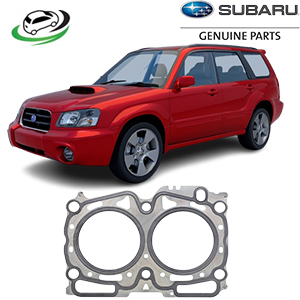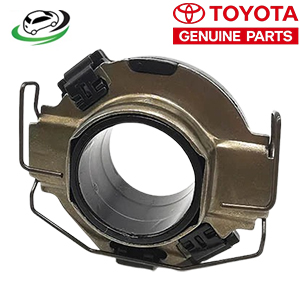-6%
Get Subaru Outback 2.5L Engine Cylinder Head Gasket 11044AA770
The engine cylinder head gasket is one of the most critical components in an internal combustion engine. It acts as a seal between the engine block and the cylinder head, ensuring that combustion gases remain in the combustion chamber and that coolant and oil do not mix. A properly functioning cylinder head gasket is vital for engine performance, longevity, and reliability. When it fails, the results can be catastrophic for the engine.
In this comprehensive guide, we’ll explore the functions, types, materials, installation process, common issues, and maintenance of the engine cylinder head gasket in detail.
1. Function of a Cylinder Head Gasket
The cylinder head gasket serves several key roles in the engine:
- Sealing the Combustion Chamber: The primary function of the head gasket is to ensure a tight seal around the combustion chambers. This allows the engine to maintain the necessary compression for combustion, resulting in efficient power production.
- Separation of Engine Fluids: Engine oil and coolant are essential for the operation of any engine. However, these fluids must not mix, as coolant contaminating the oil can reduce its lubricating properties, leading to engine wear. The head gasket prevents oil from leaking into the coolant system and coolant from entering the oil passages.
- Heat and Pressure Management: The cylinder head gasket plays a critical role in withstanding the immense heat and pressure generated by the engine. A reliable gasket will not crack or warp under the engine’s high-temperature, high-pressure environment.
- Supporting Proper Compression: The head gasket helps to maintain compression in the combustion chambers. Without the right amount of compression, the engine will misfire or experience a significant reduction in power.
2. Types of Cylinder Head Gaskets
Various types of head gaskets are used depending on the engine’s requirements and the vehicle manufacturer’s specifications. The most common types include:
- Multi-Layer Steel (MLS) Gaskets: These are the most widely used head gaskets in modern vehicles. Composed of several layers of steel, usually coated with a rubber-like material, MLS gaskets are designed to withstand high-pressure and high-temperature environments. Their multiple layers offer enhanced sealing and longevity, making them suitable for high-performance and turbocharged engines.
- Composite Gaskets: Composite gaskets were commonly used in older vehicles. They are typically made of graphite or asbestos (asbestos is no longer used due to health concerns). Composite gaskets are softer and easier to install but are less durable compared to MLS gaskets. They are more prone to failure under extreme heat or pressure conditions, making them less common in modern engines.
- Copper Gaskets: Copper gaskets are popular in performance engines due to their excellent heat conductivity. They provide superior sealing capabilities but can be harder to install correctly. Copper gaskets are often used in engines subjected to high loads and temperatures, such as in race cars or heavily modified engines.
- Elastomeric Gaskets: These gaskets feature a combination of steel and elastomeric material. The elastomeric material helps provide extra sealing around specific areas such as oil and coolant passages. Elastomeric gaskets are more flexible and can handle the stresses of modern engines with complex designs.
3. Materials Used in Cylinder Head Gaskets
The materials used in cylinder head gaskets depend on the type and purpose of the gasket. Some common materials include:
- Steel: Multi-layer steel (MLS) gaskets use thin layers of steel to provide strength and resistance to warping. Steel gaskets can handle high pressure and temperature without degrading over time.
- Graphite: Graphite is often used in composite gaskets for its heat tolerance and flexibility. It helps the gasket conform to uneven surfaces, providing an effective seal even in older or high-mileage engines where the engine surfaces may not be perfectly flat.
- Copper: Copper offers excellent heat conductivity and durability, making it ideal for high-performance applications. Copper gaskets require precision during installation because they can deform more easily than other materials.
- Elastomers: Elastomeric materials, such as rubber, are used to enhance the sealing properties of the gasket, especially around critical areas like oil and coolant passages.
4. Installation Process of a Cylinder Head Gasket
Installing a cylinder head gasket is a complex process that requires precision and expertise. The key steps include:
- Engine Disassembly: The engine must be partially disassembled to gain access to the cylinder head. This typically involves removing components like the intake manifold, exhaust manifold, timing components, and accessories.
- Removal of the Cylinder Head: Once the necessary parts are removed, the cylinder head can be carefully taken off the engine block. This requires loosening the head bolts in a specific sequence to prevent warping the head.
- Surface Preparation: Both the engine block and the cylinder head must be cleaned and inspected for damage. Warped or cracked surfaces must be machined or replaced, as an uneven surface will prevent the new gasket from sealing properly.
- Installing the Gasket: The new head gasket is placed on the engine block, ensuring that all holes and dowels line up correctly. The head gasket must be installed in the correct orientation to prevent fluid leaks and ensure optimal sealing.
- Reattaching the Cylinder Head: After placing the new gasket, the cylinder head is carefully reattached, and the head bolts are tightened using the manufacturer-specified torque settings. Proper torque is crucial for ensuring a uniform seal.
- Reassembly and Testing: After the cylinder head is reinstalled, the rest of the engine components are reassembled, and the engine is tested to ensure that the gasket is sealing correctly and that no leaks are present.
5. Common Cylinder Head Gasket Issues
A failed head gasket can cause several problems, ranging from reduced engine performance to complete engine failure. Some of the most common issues associated with head gasket failure include:
- Coolant Leaks: A blown head gasket can allow coolant to leak into the combustion chamber or oil passages. This can result in external leaks or internal leaks that lead to coolant contamination of the oil.
- Overheating: A faulty head gasket may cause the engine to overheat, either by allowing coolant to escape or by preventing proper cooling due to internal leaks.
- White Smoke from the Exhaust: White smoke is a sign that coolant is being burned in the combustion chamber. This is typically a result of a blown head gasket allowing coolant to enter the cylinders.
- Loss of Engine Compression: A damaged head gasket may allow compression to escape from the combustion chamber, leading to misfires, reduced power, and poor fuel efficiency.
- Oil Contamination: When coolant leaks into the oil passages due to a blown head gasket, it can create a milky substance in the oil. This contaminated oil loses its ability to properly lubricate the engine, leading to accelerated wear.
6. Symptoms of a Blown Head Gasket
Recognizing the signs of a blown head gasket early can help prevent further engine damage. Common symptoms include:
- Overheating: If the engine frequently overheats, it could be a sign of a failing head gasket.
- White Smoke: White smoke from the exhaust, especially during startup, is often an indicator of coolant entering the combustion chamber.
- Bubbles in the Coolant Reservoir: Bubbles or foam in the coolant reservoir or radiator may indicate exhaust gases entering the cooling system, a common symptom of a blown head gasket.
- Milky Oil: If the engine oil appears milky or frothy, it may be contaminated with coolant due to a faulty head gasket.
- Loss of Power: Reduced engine performance, rough idling, or difficulty starting the engine can all be signs of a head gasket failure.
7. Preventing Cylinder Head Gasket Failure
While head gasket failure can sometimes be unavoidable, there are several steps you can take to prolong the life of the gasket:
- Regular Maintenance: Keep the cooling system in good condition by checking coolant levels and performing regular coolant flushes. Overheating is one of the leading causes of head gasket failure.
- Use Quality Parts: Always use high-quality engine oil, coolant, and replacement parts. Substandard materials can accelerate wear and contribute to gasket failure.
- Monitor Engine Temperature: Keep an eye on the engine’s temperature gauge. If the engine begins to overheat, shut it down immediately to prevent further damage.
8. Conclusion
The engine cylinder head gasket is an essential part of an internal combustion engine, ensuring that combustion, oil, and coolant systems remain separate while maintaining proper compression. There are different types of head gaskets, including MLS, composite, and copper, each suited to specific engine designs and applications. Proper installation and maintenance are critical to the longevity and performance of the head gasket, and recognizing the signs of failure early can prevent severe engine damage. Regular cooling system maintenance, using high-quality materials, and keeping an eye on engine temperature are key to preventing head gasket failure and ensuring the engine runs efficiently.
Follow us on Facebook for more parts.






Reviews
Clear filtersThere are no reviews yet.